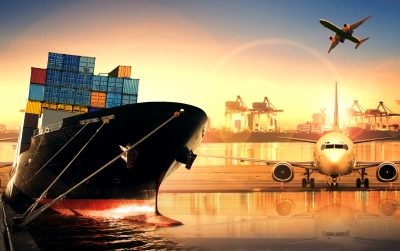Let’s get one thing straight: supply chain stakeholders are not against progress and innovation. One can only look at how companies responded in various ways during the height of the COVID-19 pandemic, primarily by embracing digital solutions and revisiting existing processes to better serve their customers, taking into account their changing preferences (perhaps enforced, in the case of the thrust to minimize physical contact at the time) and minimizing disruption as much as possible.
Yes, some of these players only really took these steps when it became clear how pandemic-related restrictions would seriously hamper their competitiveness. One could argue they could have taken steps earlier – digital solutions have been around for a while, after all. But, again, the keyword here is “competitiveness”. If pursuing innovation for the sake of being ahead ultimately impacts the company’s bottom line and ability to provide value for its customers, is it really worthwhile? The cautiousness of some stakeholders can be attributed to high costs, whether during the transition or after, and the potential for disruption of the bad kind. Even big companies have fallen into this trap.
That brings us to the Philippine Ports Authority’s plans to implement a container monitoring system for foreign containers. The opposition of many groups, SCMAP included, to the Trusted Operator Program-Container Registry and Monitoring System also boils down to its impact on competitiveness, the potential for disruption, and the higher costs this will definitely entail for end consumers. Key concerns include additional costs and procedures that will impact movement of goods and shelf prices, as well as TOP-CRMS duplicating systems already in place.
First, to costs. The TOP-CRMS imposes a new container insurance requirement costing PHP 980. There is also a service fee of PHP 3,520 per container for the use of staging facilities beyond the first three days. There are accreditation fees for shipping lines, truckers and other stakeholders. There are unseen costs: one-time costs devoted to familiarizing truckers with the use of tracking devices required for implementing the system; costs stemming from delays due to new procedural requirements, as well as the inevitable “growing pains” during the transition.
Also of particular concern is the overlap of the proposed TOP-CRMS with existing systems. The PPA’s goals of monitoring the movement of containers is already being fulfilled by the Bureau of Customs, through international agreements and regulations that foreign shipping lines have to adhere to, as well as its own E-TRACC system. Any additional system that fulfills the same functions as existing ones will only lead to additional costs and delays. We also note that the PPA’s jurisdiction only covers the ports the agency has administrative oversight on, and will thus not cover, say, the Cebu International Port, which is under a different government agency. This would lead to further disruption, as movement of goods within the country will be even less harmonized.
Finally, the PPA’s pronouncements about how TOP-CRMS will alleviate port congestion and reduce smuggling provide little clarity as to how it will precisely do so. Arguably, the additional requirements and procedures will cause further congestion that will impact the movement and final cost of goods. But then, saying this system is a “silver bullet” that will solve two perennial problems at once seems to be a statement designed to further curry public sentiment. Statements made in the media about how opposition to TOP-CRMS is solely because stakeholders are protecting and abetting smuggling only serve to muddle the issue, and deny further possibilities of genuine consultation and discussion.
Progress and innovation comes in many ways. It can come from big-ticket initiatives, the sort that forces us to reimagine things in a once-in-a-generation way. It also comes from smaller interventions: minor changes in the way we work, the way we interact with the systems that are already in place. Stakeholders rightly point out that the TOP-CRMS’ goals are already being addressed by other systems already in place, as well as pieces of legislation already making its way through Congress. A better way to address the PPA’s goals is to work more closely with port users and other stakeholders, ensuring its systems better interface with those already in place, whether by other government agencies or by the port users themselves. It will cost less, it will minimize disruption, and it will go further in realizing this government’s goals of reducing logistics costs to further spur economic growth.
Henrik Batallones is the marketing and communications director of SCMAP, and editor-in-chief of its official publication, Supply Chain Philippines. More information about SCMAP is available at scmap.org.
PREVIOUS COLUMN: A Reminder About Public Mobility






